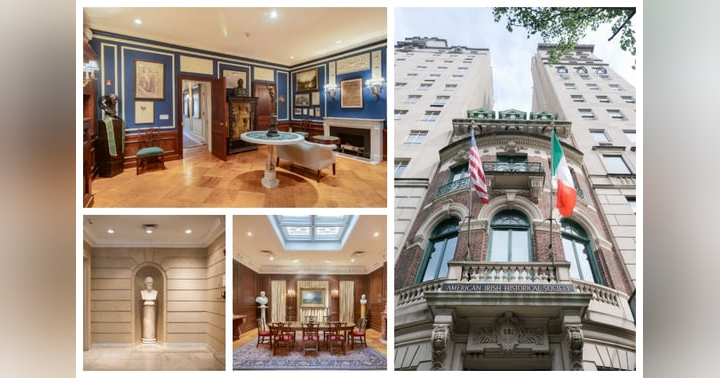A Lost Masterpiece, An Irish Artist, Two Historians and Irish Stew

Battle of Aughrim 1691 by John Mulvany (1839 - 1906)
I often remark that Irish people can successfully play a game of two degrees of separation. Frequently, when Irish people meet for the first time, they engage unknowingly in this game as they try to place their interlocutor's position within the tribe. Sometimes it's the place of origin, a family name, or what one does for a living, more often than not, a point of connection is revealed through mutual acquaintances and that chain of relationship rarely has more than two people. I often think about this drive to connect within the Irish community and when I wrote a couple of days back about the Battle of Aughrim, I realized how the work of the two historians we've had on the podcast overlaps.
In episode 5 John Lee and I spoke with Geoff Cobb about the fascinating history of Irish New Yorkers.
I first came upon Geoff's work when reading a piece in the New York Times detailing his research on the Irish American artist John Mulvany (1839 – 1906). I reached out to Geoff who graciously invited me to a lecture he was giving in Brooklyn on the life of Walt Whitman. Since then I have continued to follow his work and was delighted to have him as a guest on the podcast.
Thanks to Geoff I developed an interest in John Mulvany's work and career. The artist is probably best know for his massive depiction of the Battle of Little Big Horn which was an enormous success and created a hagiographic impression of General George Custer that many folks would share of a commander who is no longer ripe for cannonization. Mulvany's story was one of great artistic and commercial triumph before descending into impoverished obscurity, alcoholism and likely suicide.
Custer's Last Stand at Little Big Horn by John Mulvany
In recent years, Mulvany's work is back in the news with the rediscovery of his painting of the Battle of Aughrim. Although the painting was orginally created in Ireland and was destined for sale in America having been commissioned by the Irish Club of Chicago. Sadly that sale was to fall through and the work's subsequent movements are murky. The painting seems to have last been spotted in Denver in 1914 before popping up almost 100 years later on EBay in the hands of a San Francisco art dealer in 2010. It was spotted by the Irish art historian Niamh O'Sullivan who arranged for it's return to Ireland where it was subsequently sold to an Irish collector by Gorry Gallery
The subject matter of this painting, a disastrous defeat of Jacobite Irish forces at Aughrim in 1691, was covered in in our discussion of battlefield archaeology with Damian Shiels on Episode 7 of Irish Stew.
The battle was likely the bloodiest engagement ever fought on Irish soil with an estimated 7,000 deaths. Mulvany's rendering depicts a point in the battle where an Irish victory might have been possible, but it was not to be, the sudden death of the Jacobite commander Charles Chalmot de Saint-Ruhe who came to a gory end courtesy of a cannonball, resulted in the collapse of Irish forces. Damian's work confirmed the subsequent rout with the discovery of a debris trail left by fleeing Jacobites who were hunted down mercilessly by their Williamite opponents. It was this defeat and not the more famous Battle of the Boyne that ended the Williamite War and was to result in the implementation of draconian Penal Laws on Irish Catholics which would create much hardship and the sectactarian conflict which haunts Ireland to this day
To my knowledge, Damian has not met Geoff, although Geoff remarked in a recent exchange that he had read one of Damian's books on the Irish participation in the Civil War. However both men are connected back through time through the life of the John Mulvaney who visited Aughrim while preparing to paint his masterwork and it was in Geoff Cobb's neighborhood of Greenpoint in Brooklyn where the failing artist would spend his final years. When COVID is over I hope to introduce them in person to each other and remove whatever number of degrees of separation lie between them. I imagine they will have much to talk off and hopefully will let me listen in.
Further reading
- Gorry Gallery Catalog where John Mulvany's Battle of Aughrim was exhibited
- John Mulvany’s Paintings and Politics by Anne Weber - Great Grand Niece of the Painter
- The great Irish painting that turned up on eBay - Niamh O'Sullivan

















